visual art
The visual arts are art forms that create works that are primarily visual in nature, such as ceramics, drawing, painting, sculpture, printmaking, design, crafts, photography, video, film making and architecture.
visual art with flowers
Flowers for spring? Groundbreaking. In all seriousness though, blooming blossoms and flowering buds have long signified the end to dark winters and the beginning of fresh spring mornings and greener landscapes.
As well as their environmental significance, flowers have attracted artists for their rich symbolism, and, of course, their diverse color palettes. Here we take a look at 12 artists who have used flowers as both subject and material.
1. Claude Monet
Claude Monet’s series of water lily paintings have become his most recognizable works. Made up of around 250 oil paintings, Monet’s artworks capture his flower garden in his home in Giverny. Many of the works were painted while the artist suffered from cataracts and became his main focus during the last 30 years of his life.
Painted in the Impressionist style, the colors Monet has used in Water Lilies, are rich and vibrant. They differ from his previous paintings, and other Impressionists, because they're so immersive. Impressionist landscapes often aimed to depict a whole vista, but Monet makes his colorful lilies the entire focus. Zoom into the painting to get a sense of the artist's energetic brushwork.
Discover the artists who've used fabulous flora in their works
2. Vincent Van Gogh
Vincent Van Gogh made two series of his now-iconic Sunflowers. The first series, done in Paris in 1888, depicts the flowers lying on the ground. The second, more famous set was executed a year later in Arles, and shows a bouquet of sunflowers in a vase.
The vivid yellows were made possible by the introduction of new pigments that Van Gogh used eagerly. The floral paintings decorated the so-called Yellow House in Arles. His fellow artist friend Paul Gaugin once depicted Van Gogh painting sunflowers, but Van Gogh felt Gaugin had “portrayed him as a madman”.
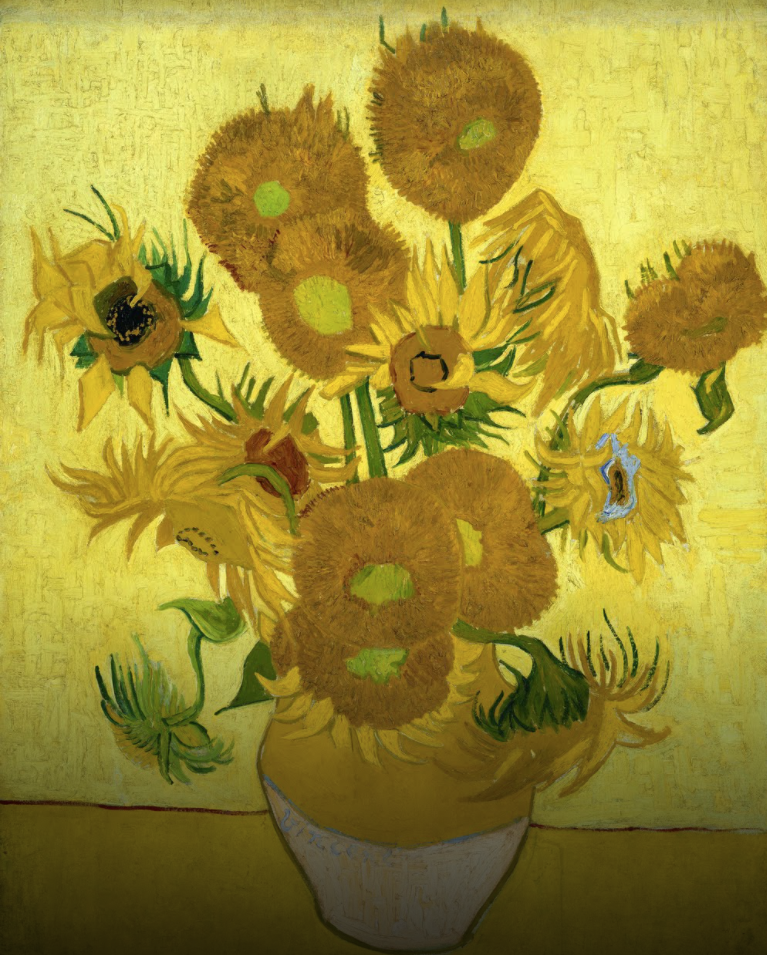
3. Georgia O’Keeffe
As a gardener, artist Georgia O’Keeffe was often inspired to make a dozen or more paintings of a specific flower. It’s said she became interested in the brilliant colors and billowing petals of canna lilies when she visited Lake George, New York in 1918. The Red Canna series began with watercolor depictions of these vibrant flowers but O’Keeffe progressed onto abstract, close-up images in oil, which now epitomize the artist’s Modernist style.
Often described as erotic, O’Keeffe's flower paintings experimented with shades of red, yellow and orange, magnifying the lilies' textures, sweeping lines, and plump shapes. In this oil painting from 1927, the artist focuses on the wild red petals of the flower.
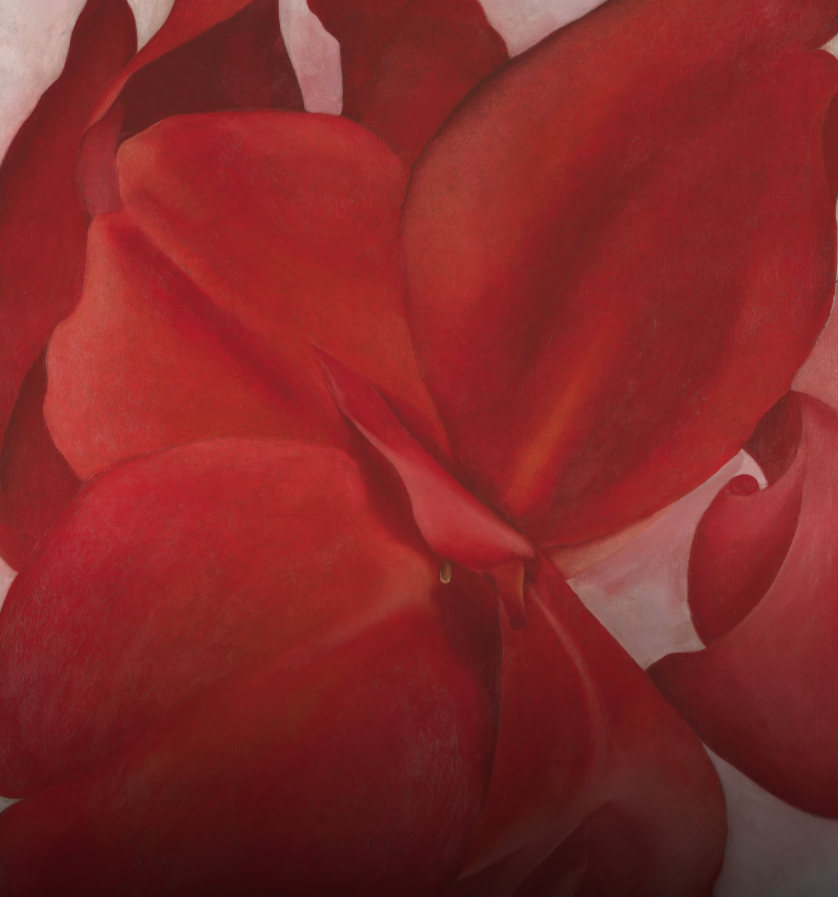
4. Andy Warhol
Andy Warhol’s series, Flowers, is made up of ten screenprints based on photographs taken by Patricia Caulfield which were featured in the June 1964 issue of Modern Photography magazine. Warhol makes the photographs his own by flattening and cropping and adding vibrant, contrasting colors.
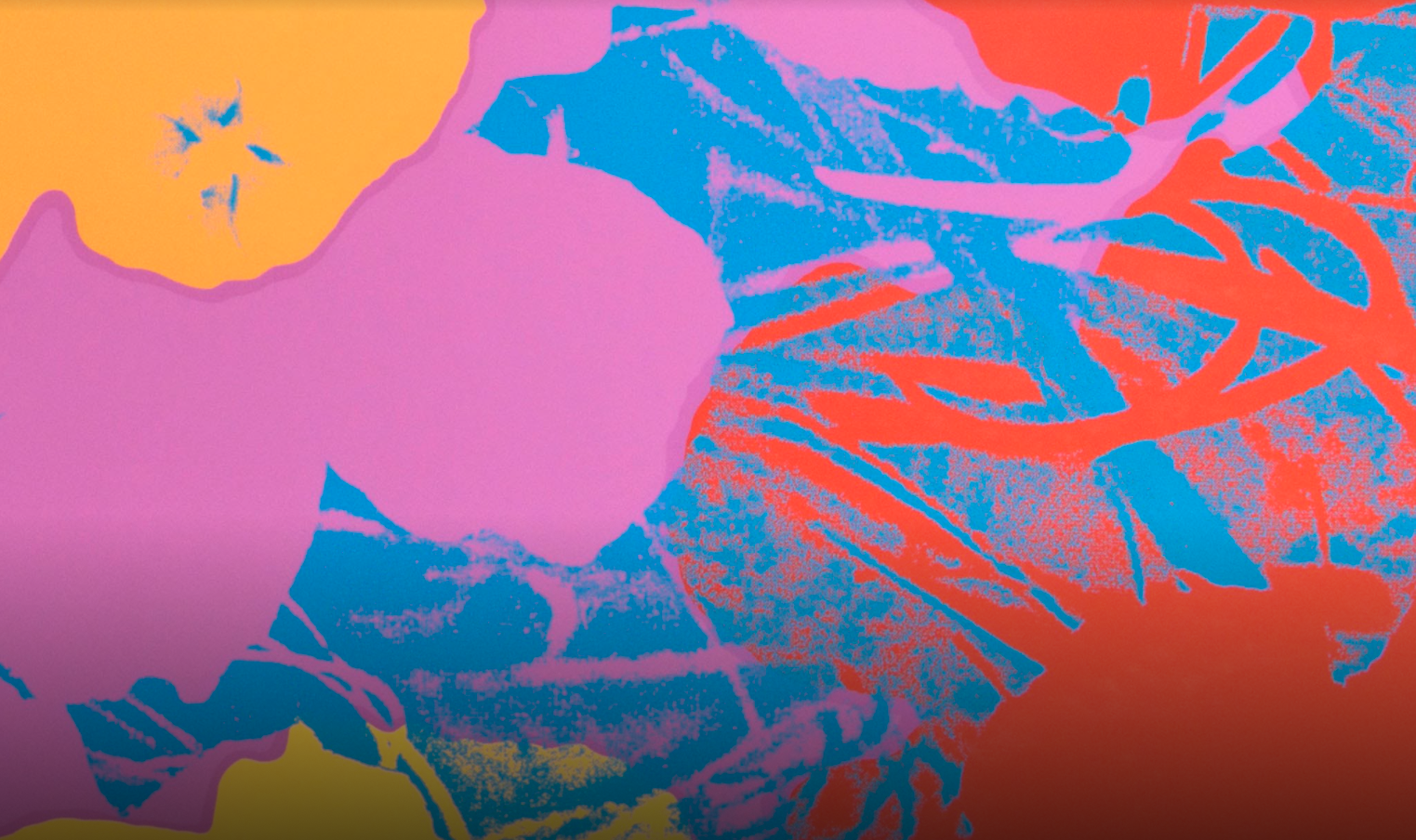
5. Ambrosius Bosschaert
Ambrosius Bosschaert the Elder was a still life painter of the Dutch Golden Age, a period in the Netherlands, roughly spanning the 17th century, in which Dutch trade, science, military, and art were among the most acclaimed in the world.
Bosschaert was one of the first artists to focus on still life painting, and he started a tradition of painting detailed bouquets of tulips and roses. He focused on scientific accuracy, though the flowers still contained symbolic and religious meanings. Thanks to the booming 17th-century Dutch art market, he became highly successful. The artist rarely varied his compositions and three motifs remained common: flowers in a vase, on a table and either in a niche or window sill.
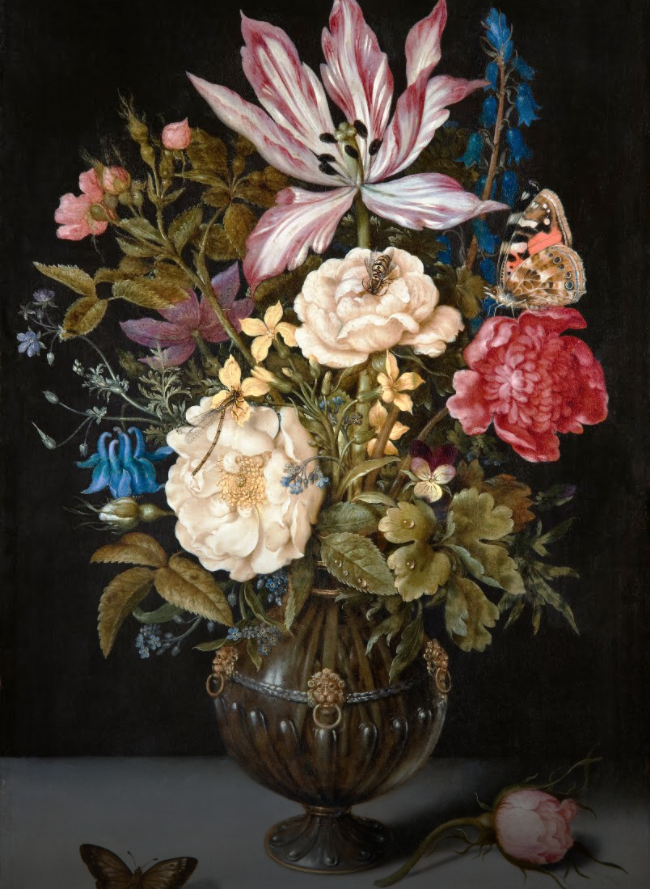
6. Jeff Koons
Puppy is a large-scale sculpture by artist Jeff Koons and currently stands guard at the Guggenheim Museum Bilbao.
Known for testing the boundaries between popular and elite culture, this piece employs computer modeling to create a work that references 18th-century formal European gardens. Using flowers as decoration, Koons carpets a giant West Highland terrier in bedding plants, making for one monstrously cute pup.
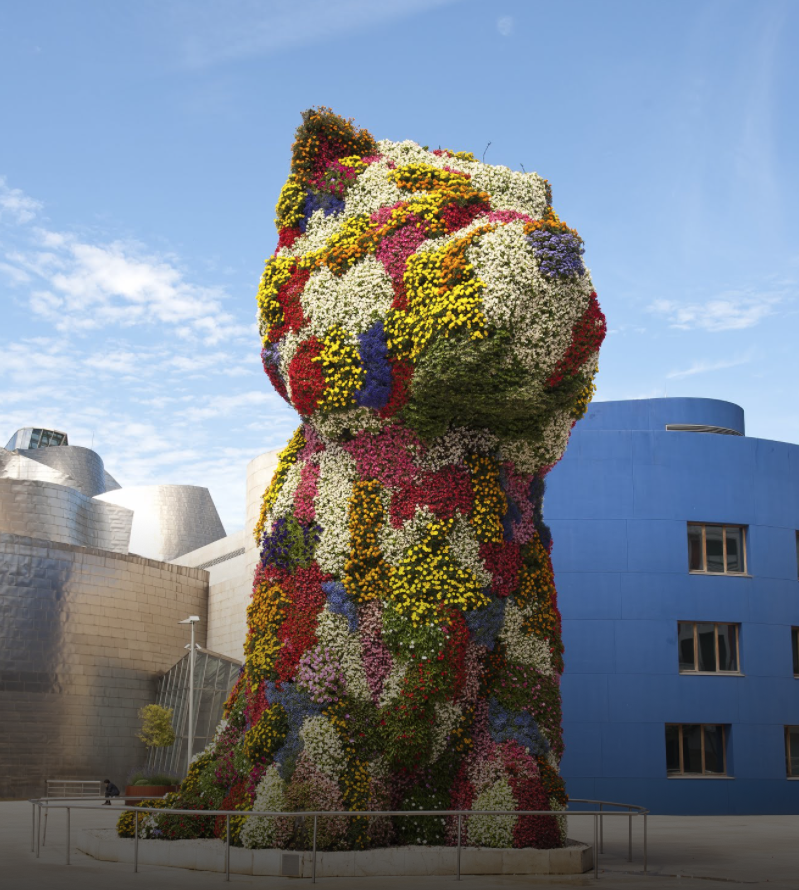
7. Rachel Ruysch
Rachel Ruysch was a still-life painter from the Northern Netherlands. She specialized in flowers, inventing her own style and achieving international fame in her lifetime. Due to a long and successful career that spanned over 6 decades, she became the best documented woman painter of the Dutch Golden Age.
Unlike Bosschaert, Ruysch’s compositions were often asymmetrical with blossoms arranged in pyramid shapes with curving stems adding volume. The artist celebrated color, texture and form in her works with a high level of minute attention to detail even capturing individual grains of pollen inside each open flower, zoom in and see if you can spot the grains.
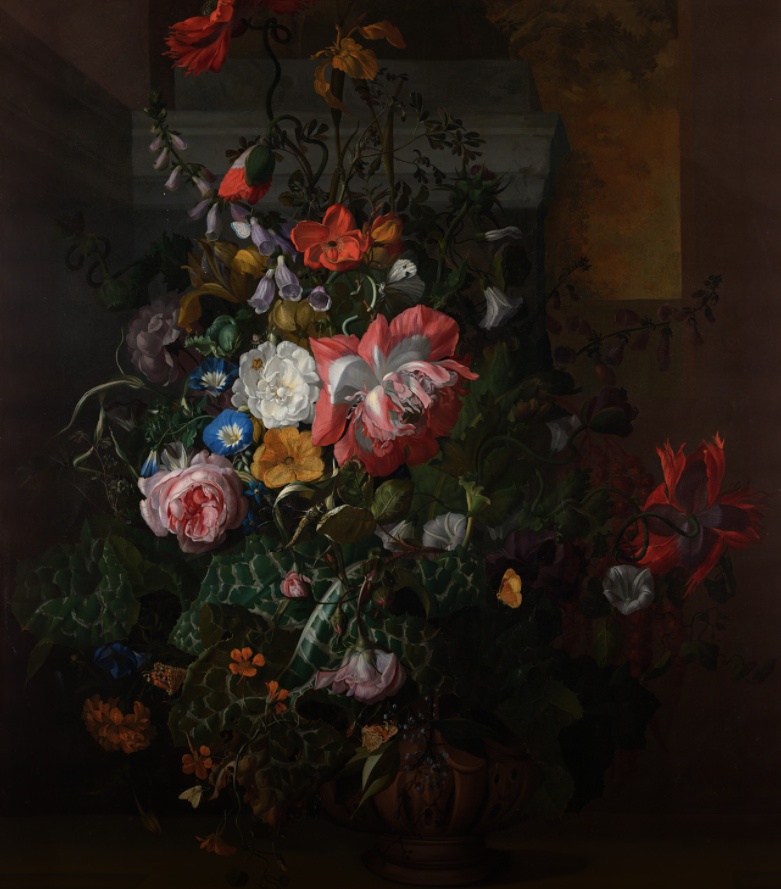
8. Clementine Hunter
Self-taught folk artist Clementine Hunter is known for her colorful and straightforward scenes from her memories of life on a Southern plantation. Hunter first began painting in her 50s, using brushes and paints left by an artist who visited Melrose Plantation, where she then lived and worked. Having worked primarily in the cotton fields and then as a domestic servant, her compositions include scenes of outdoor activity and still lifes of everyday objects.